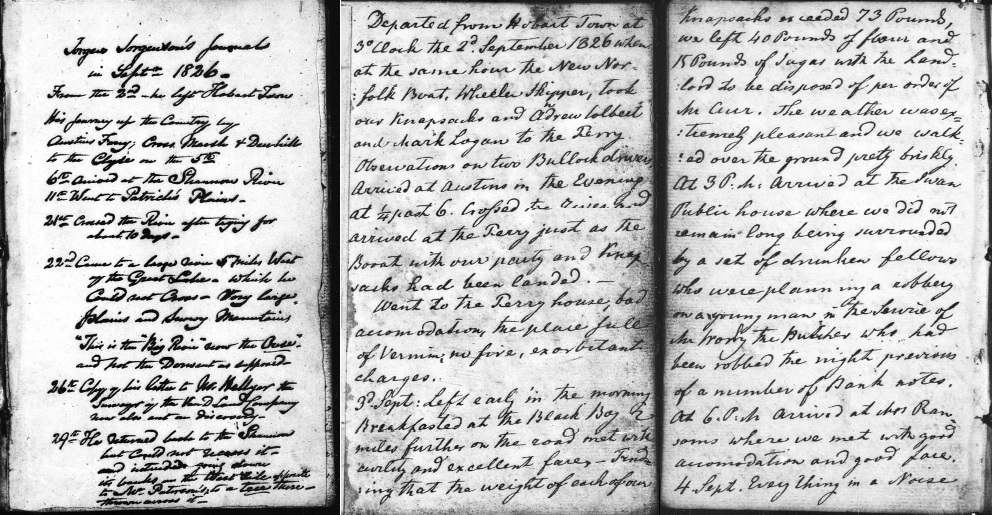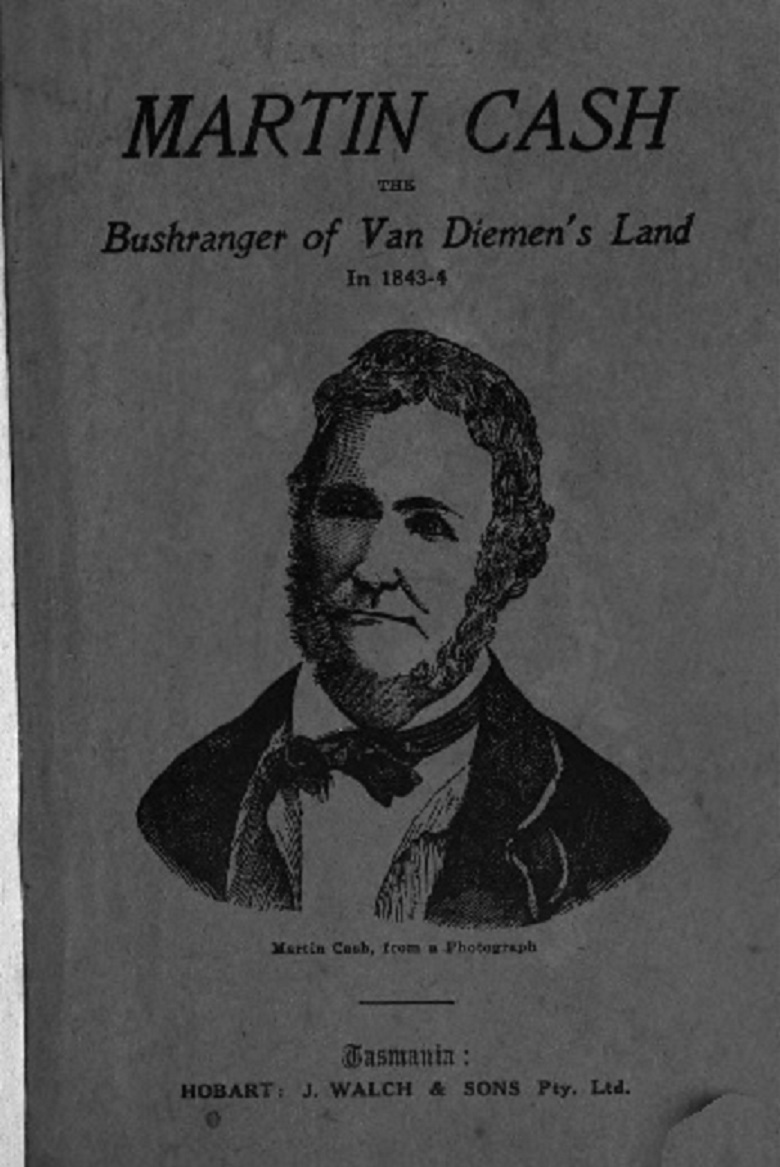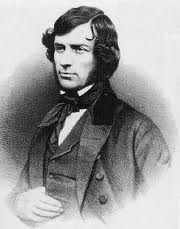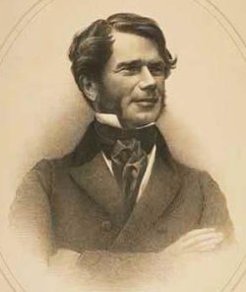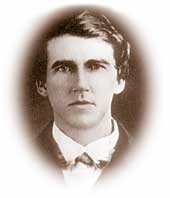AustLit
-
Van Diemen’s Land was a notably literary prison island. Convict ballads set in the colony contribute to that prevalent response to the new land as a hell on earth – an antipodean underworld of punishment – eternal, in effect, for the many condemned to exile for the terms of their natural lives. In addition to the laments about exile, the bitterness about hard labour, the corruption and injustice of society, ballads like ‘Van Diemen's Land’ warn the listener against breaking the law or radical politics. ‘Seizure of the Cyprus Brig,’ by contrast, is a rallying cry of freedom and rebellion that retells the very popular story of the 1829 mutiny on the convict transport Cyprus, sailing from Hobart to Macquarie Harbour. The story of this mutiny was incorporated by Marcus Clarke into His Natural Life. William Buelow Gould, the convict artist and hero of Richard Flanagan’s Gould's Book of Fish (2001) was a convict passenger on board but put ashore at Recherche Bay with others who refused to join the mutiny.
-
Important works by prison writers of Van Diemen’s Land include Henry Savery's The Hermit in Van Diemen's Land (1829) and his autobiographical fiction Quintus Servinton: A Tale, Founded upon Incidents of Real Occurrence (1831). A young businessman in Bristol, Savery (1791-1842) was transported for forgery in 1825. On arrival in Van Diemen’s Land he was employed as a convict writer in the office of the Colonial Secretary, which raised questions of propriety with the administration in London that Governor Arthur had to deal with. His wife and child came out to the colony in 1828 but returned the following year. Savery was again convicted of forgery in 1840 and sentenced to Port Arthur where he died in 1842. The Hermit in Van Diemen's Land is the first book of essays published in Australia and is a collection of 30 weekly sketches about life in Hobart and environs first published, over the pseudonym ‘Simon Stukeley,’ in Andrew Bent’s Colonial Times.
-
Quintus Servinton was the first novel printed and published in Australia and tells the moral tale of a flawed businessman and his idealised love for Emily Clifton. Servinton, like Savery, commits forgery for which he is convicted and transported. But with its eventual pardon for Servinton and his return to England and reunion with Emily, the novel’s conclusion is in stark contrast to Savery’s fate at Port Arthur. The novel was edited by Cecil Hadgraft under the title of The Bitter Bread of Banishment, ‘formerly Quintus Servinton,’ in 1984 and is now available as an e-book on Project Gutenberg Australia in their ‘Library of Australiana.’ William Walker’s copy of the 1830/31 Hobart issue of the novel has been digitised by the Tasmanian Archives and Heritage Office and is available on-line. Rod Howard has published a useful biography of Savery, A Forger's Tale : The Extraordinary Story of Henry Savery, Australia's First Novelist (Melbourne: Arcade, 2011).
See also the AustLit Entry on Henry Savery.
-
Another prison writer, Jorgen Jorgensen (1780-1841) was sentenced to transportation to Van Diemen’s Land in 1826 after various adventures at sea, which included being at the first settlements in Van Diemen’s Land in 1803 and 1804, and in a later island venture of 1809, involvement in a coup against the English governor of Iceland and a two-month period as the self-proclaimed ‘Protector of Iceland.’ Jorgenson’s life is characterised by wild swings between buccaneering adventure and a range of minor criminal behaviours.
In Van Diemen’s Land he was a convicted swindler, a pastoral company employee and a police constable. But he was also a talented writer and observer of the colonial situation, becoming interested in Aboriginal Tasmanians after his early expeditions to the north-west of the island. Jorgenson published 'A Shred of Autobiography' in two installments, in 1835 in James Ross’ Hobart Town Almanack (pp. 115-80) and in 1838 in William Gore Elliston’s Hobart Town Almanack and Van Diemen’s Land Annual (pp. 35-155). This autobiography was republished in 1891 in London, under the much more enticing title of The Convict King: Being the Life and Adventures of Jorgen Jorgenson, Monarch of Iceland, Naval Captain, Revolutionist, British Diplomatic Agent, Author, Dramatist, Preacher, Political Prisoner, Gambler, Hospital Dispenser, Continental Traveller, Explorer, Editor, Expatriate Exile, and Colonial Constable. This version was translated into Danish in 1892, as Brudstykker af en selvbiografi, re-edited in 1973 and re-translated into Danish in 2006.
Jorgenson kept journals of his expeditions in Van Diemen’s Land in the late 1820s and also wrote a history of the Van Diemen’s Land Company which included ‘the first record of the way of life of the Aborigines under the stresses of European settlement, by one who had seen them in their natural surroundings and pursuing, to some extent at least, their natural activities’ (Plomley 32). Jorgenson was involved in the beginning of the Black Wars in 1824, with the arrival of Arthur, and with the organisation of the ‘Roving Parties’ for the protection of white settlers and the capture and removal of Aboriginals. He was also a chief organiser of the Black Line in the Oatlands district in 1830. A book by Jorgenson about the ‘Habits, Manners, and Customs of the Aborigines of Van Diemen’s Land’ was advertised in Hobart in 1837 but never appeared. His study of the ‘Aboriginal Languages of Tasmania’ was published posthumously in the Tasmanian Journal of Natural Science in 1842 (1.4, pp. 308-18). N. J. B. Plomley retrieved the manuscript of Jorgenson’s ‘A Narrative of the Habits, Manners, and Customs of the Aborigines of Van Diemen’s Land’ from the Braim papers in the Mitchell Library, NSW and edited it in a volume entitled Jorgen Jorgenson and the Aborigines of Van Diemen’s Land (1991). This narrative is of comparable importance to George Augustus Robinson’s journals. The historian James Bonwick knew and used Jorgenson’s treatise. Jorgenson is the subject of a biography by Dan Sprod, The Usurper: Jorgen Jorgenson and his turbulent life in Iceland and Van Diemen's Land 1780-1841 (2001) and has a walk-on part in numerous narratives of convict Tasmania, including recent fiction by Richard Flanagan and Rohan Wilson, and is the subject of a well-reviewed biography by Sarah Bakewell, The English Dane : A Life of Jorgen Jorgenson (2005). The Danish literary historian Svend Erik Larsen reads Jorgenson as a notable trans-hemispherical and bi-lingual instance of a world author, one of that company of European traveller-explorer-writers that includes Ludwig Leichhardt, Stefan von Kotze and Carl Lumholtz (see Larsen).
See also the AustLit entry on Jorgen Jorgensen.
-
Stories about Tasmanian bushrangers like Matthew Brady, Michael Howe and Martin Cash, all escaped convicts, circulate in various genres and styles. The central character of David Burn’s three-act play The Bushrangers (1829) is the Macquarie Harbour escapee Matthew Brady but the early account of Michael Howe, ‘the terror of Van Diemen’s Land,’ was actually written by the ex-convict T.E. Wells. Wells’s pamphlet Michael Howe: The Last and the Worst of the Bushrangers of Van Diemans Land was published in Hobart by Andrew Bent in 1818, one of the earliest of Van Diemen’s Land publications, while Wells was still a ticket-of-leave man. ‘Last,’ was wishful thinking. Within the frame of Wells’s narrative is the description of an intriguing, lost work of Tasmanian convict and bushranger writing, Michael Howe’s ‘Journal of Dreams.’ Towards the end of his murderous reign, Howe was nearly captured and left behind his ‘Arms, Ammunition, Dogs and Knapsack.’ In this knapsack, Wells writes:
...was found a sort of Journal of Dreams, which shew [sic] strongly the distressed state of his mind, and some tincture of superstition. From this little book of Kangaroo skin, written in Kangaroo blood, it appears that he frequently dreamt of being murdered by natives, of seeing his old Companions […] of being nearly taken by a Soldier; and, in one instance, humanity asserts itself even in the breast of Michael Howe, for we find him recording that he dreamt of his Sister. It also appears from this memorandum book, that he had always an idea of settling in the woods; for it contains long lists of such seeds as he wished to have, of vegetables, fruits, and even flowers! (36-37)
-
The most accomplished example of ex-convict bushranger writing is Martin Cash, ‘the gentleman bushranger’s A Personal Narrative of his Exploits in the Bush and his Experiences at Port Arthur and Norfolk Island (this 1870 publication was an edited version of Cash’s memoirs dictated to James Lester Burke, an ex-convict and writer acquaintance of Cash; a full version of Burke’s narrative, The Uncensored Story of Martin Cash, edited by Joan and Buck Emberg, was published in 1994). Transported in 1837 from Ireland, Cash spent time at Botany Bay and Norfolk Island, and made a spectacular escape from Eaglehawk Neck at Port Arthur in 1842 with two companions. Marcus Clarke drew on this story for the escape of John Rex in His Natural Life (see Robson). Cash died at his home in Glenorchy in 1877.
-
John Mitchel
John Mitchel, sent to Van Diemen’s Land for sedition, along with other political activists in the Young Ireland movement of 1848, wrote of the consolations of nature during his time in remote, rural exile in Tasmania, in Jail Journal; or, Five Years in British Prisons. (1854).
See the full AustLit Entry on John Mitchel.
-
William Smith O'Brien
Smith O'Brien's Principles of Government, or, Meditations in Exile (1856) was mostly written in Van Diemen’s Land between 1850 and 1854 and is a work of general political philosophy informed by his experience as a member of parliament, a civil servant, an agitator in the Irish nationalist cause, and as a convict in the British penal system.
See the full AustLit entry on William Smith O'Brien.
-
Linus Wilson Miller
Often referred to as one of the ‘Canadian Exiles’ in Australia, Linus Miller was, in fact, an American who was transported in 1840, from England, for involvement in the ‘patriot’ cause against the British government in Canada. There is a memorial to the ‘Exiles of the Canadian Rebellion’ in a reserve near Sandy Bay Road, Hobart. Miller was eventually pardoned, working as a clerk and tutor at Port Arthur before returning to the US in 1846. Miller’s Notes of an Exile to Van Diemen's Land: Comprising Incidents of the Canadian Rebellion in 1838, Trial of the Author in Canada, and Subsequent Appearance before Her Majesty’s Court of Queens’ Bench, in London, Imprisonment in England, and Transportation to Van Diemen’s Land (1846) includes some of the most vivid and detailed writing about the penal regime at Port Arthur (chapters 25-27), ‘this Sodom’ as he referred to it (347). All these convict writers were escapees or failed escapees from Van Diemen’s Land.
See the full AustLit Entry on Linus Wilson Miller.
-
Convict fiction – writing about, rather than by, convicts and the history of penal systems in Australia – has been a major focus of literary research, including scholarly editing and criticism. Scholarly editions of Leakey’s The Broad Arrow (Sydney University Press, forthcoming 2016) and Clarke’s His Natural Life (UQP 1976; Academy Editions 2001) for example, are comprehensive studies with focuses on national literature, historical fiction, author biography, generic influences, textual and book production, critical reception, etc. In that sense, the major editorial and textual studies of convict fiction in Australian literature are of Tasmanian writing.
E. Morris Miller’s article on ‘Australia's First Two Novels: Origins and Backgrounds’ (Tasmanian Historical Research Association: Papers and Proceedings, 1965), L.T. Hergenhan’s Unnatural Lives: Studies in Australian Fiction about the Convicts, from James Tucker to Patrick White (1983, and later editions) and the ‘Convict in Australian Literature,’ and ‘Transportation’ entries in the The Oxford Companion to Australian Literature are about the whole terrain and include information about Tasmanian authors in this field like Mary Leman Grimstone, Charles Rowcroft, Donald Norman Cameron, William Gosse Hay, 'Price Warung', ‘G. B. Lancaster,’ Roy Bridges, Robert S. Close (Eliza Callaghan, 1957) as well as threads about the ‘Clarke tradition,’ for example, within convict fiction generally.
-
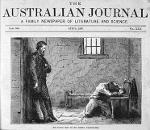 An illustration from the original serialised version of the novelSee full AustLit entry
An illustration from the original serialised version of the novelSee full AustLit entry'Scarcely out of print since the early 1870s, For the Term of His Natural Life has provided successive generations with a vivid account of a brutal phase of colonial life. The main focus of this great convict novel is the complex interaction between those in power and those who suffer, made meaningful because of its hero's struggle against his wrongful imprisonment. Elements of romance, incidents of family life and passages of scenic description both relieve and give emphasis to the tragedy that forms its heart.
(...more)See also The National Film & Sound Archive's exhibition on
-
The critical tradition is beginning to take into account more recent productions in this field like Leslie Greener’s posthumous Tea for a Stranger (Hobart: Cat & Fiddle, 1975), Daniel Farson, Swansdowne (1986), Richard Flanagan, Wanting (2008), Rohan Wilson, The Roving Party (2011); To Name Those Lost (2014) and the Hobart-born crime writer Lenny Bartulin, Infamy (2013) who continue to expand the scope and form of ‘convict fiction’ in both popular and literary modes. Reviewing Rohan Wilson’s second novel of convict Tasmania, To Name Those Lost, Geordie Williamson shows how the very traditional perception of convict history as defining national origins, and therefore of Tasmania as micro-nation, continues to have currency:
The more contemporary Tasmanian literature you read, the clearer it becomes that Australia’s most geographically removed state has become the repository of our collective historical imagination. From Richard Flanagan’s colonial-era Wanting to Christopher Koch’s elegiac 19th-century finale Lost Voices, Tassie is the place to go if you want a sense of who we are as a country, the grit and the grotesquerie of our coming into being. Tasmania is, by virtue of its size and its severance from the mainland, a kind of sociopolitical concentrate: the hard-boiled version of elements that made us who we are. (Australian 27 Sept, 2014)
See also the AustLit 'Convict Narratives' subset.
-
The AustCrime fansite includes and extensive and very useful dataset of publications by Tasmanian crime writers and crime writing set in Tasmania, including snapshots of popular police procedurals like David Owen's seven ‘Pufferfish’ krimis (so far), featuring Hobart-based Detective Inspector Franz Heineken. The literary history of Tasmania as an island of crime remains an opportunity for an Island Op from the Critical Detective Agency.
-
Read on to the next section: Little England.
You might be interested in...



